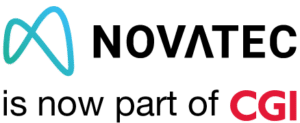Reviewing code is an aspect of software development that significantly influences the codebase’s quality and maintainability. When a code review is completed, it helps reduce bugs, improve the code’s quality, and encourage collaboration among team members. In this blog post, we will discuss the recommended approaches for code reviews from the reviewer’s perspective, the author’s viewpoint, and even the broader team-wide aspects.
Team’s perspective

Let’s begin by looking at things from the team’s perspective; every team needs to have a code review guide that all the developers can access. It’s super important to make sure everyone is on the same page and has the same resources available. This guide has got you covered with a list of critical points that you need to know for a successful code review. Through this guide, the codebase will have a good structure, perform well, have proper documentation, be easy to reuse, read, and maintain. We need to make sure that our team defines the “definition of done” (DoD) in a way that’s easy to understand for everyone. This will assist us in ensuring that all team members are aware of the minimum quality standards that are needed for the end product.
Another point to consider is that team members hype up their colleagues to join code reviews! Well, one way to make sure it’s top-notch is by letting developers learn from each other. This way they can share their skills and knowledge and create even better software. Everyone in the team should know that their inputs are valuable, no matter how much experience they have. Knowing this is really important that going through code reviews is not a pain in the neck, but a crucial part of the development process. This way, developers will willingly invest time and effort into conducting reviews.
Additionally, team members should motivate each other to seek feedback for continuous learning and create an open environment for discussion. The first step can be promoting pair programming; it can often lead developers from ping-ponging between their comments to perfection through real-time feedback. We can also plan a periodic walkthrough of the code to keep the author and reviewer in sync and aware of the progress.
Another critical point is that teams should have a style guide in place to keep their codebase clear and easy to read. This helps everybody on the team understand what’s going on and makes it much easier to work together. The best way to achieve this is the style guide rules can be applied to code editors and to the continuous integration process. Within this, developers receive immediate feedback to fix code style warnings, which helps reviewers concentrate on the core functionality instead of focusing on the code style.
Team members should learn from each other’s experiences. To achieve this, teams should schedule regular Communities of Practice (CoPs) to discuss trends and issues that arise during a review. These sessions(Backend COP, Frontend COP, Design COP, etc.) not only help the team have a better codebase but also benefit the team’s overall growth and success.
Teams must also slice big stories into smaller sub-tickets to handle the Pull Requests easily. This simple strategy can help the team break things down. Everyone understands the story better, making it easy to estimate the stories in refinement meetings. It can also help team members take ownership of the story and easily track progress. A good story refinement simplifies the development process, ensuring the team can handle complicated stories step by step.
Author’s perspective

We need to be open-minded to make the most of the review process. Let’s keep in mind that everyone on our team has different skills and viewpoints. We should appreciate and respect these differences. If we’re willing to take criticism, we can learn new things and develop ourselves. We gotta be nice and cool when our colleagues speak their minds out loud. Don’t assume anything. If you’re not sure about something, just ask questions. It’s a great way to avoid misunderstandings. Our cooperative and open-minded attitude allows us to improve ourselves and become better developers.
As a skilled software developer, it’s vital to keep the codebase consistent. Make sure that your code is as consistent with the rest of the codebase. Before we go ahead and change anything in the project, we need to make sure we’ve got a good handle on how it’s set up and how things are usually done. It would help if you considered how your changes will affect the entire project and make sure they don’t mess things up. Pairing with team members is super important for easy maintenance and keeps things running smoothly.
Like we talked about before, it’s super important for developers to stick to the usual code conventions when writing code. Doing this helps keep everything consistent and easier to understand. These coding standards include the rules for comment conventions, indent style conventions, line length conventions, naming conventions, etc. The best way to follow these conventions is to use a linter or a code formatter, which automatically warns developers about violations during development.
It is also beneficial when a developer writes a failing test for a bug fix; it will help to understand the source of the bug while trying to reproduce the bug in a test, and when the issue has been resolved successfully, the failing test is expected to pass. With the failing test we can confidently change our code base, and it will remain trustworthy.
A developer should always try to write reviewable code. To achieve this, you can keep your commits small and simple. This will help reviewers understand the code more easily. It is often very easy to understand a code with ten commits, each doing different things, then one commit with ten different features. Small commits can decrease the total complexity.
Automated testing can maintain the quality and stability of the software. These tests help developers identify issues in their code that might not show up during regular use. This way, reviewers can be confident when they approve a Pull Request. We need double-check our tests cover every possible thing that could happen, but we also need to write ’em in a way that’s easy to understand.
We need to make sure we keep our docs up to date all the time. It’s super important! We need to keep track of all changes to our codebase. That way we can easily see what we’ve modified and when! With documentation, we can catch changes quickly and avoid any confusion. Having clear and straightforward documentation provides a smooth and efficient review process.
If we’re not completely sure about the code changes we made, it’s always a good idea to ask a team member for some feedback. If we communicate our doubts and get feedback, it can help us gain knowledge from other colleagues. During these kind of paring we can also improve the overall code quality.
In the end, we can make it easier for our teammates by checking out our code before they do. Sometimes we forget to do certain things, leave some variables unused, or find the documentation unclear. It happens to all of us! So, giving our code a quick check before we push it live. That way we can avoid any annoying problems and make sure our work is top-notch.
Reviewer’s perspective

The first thing to mention is that when checking out a pull request, it’s important to be open-minded and give them helpful feedback. We should stick to talking about the code and avoid pointing fingers at people! When we’re recommending something, we need to try to be specific and helpful without coming off too strong. Don’t forget to give a shoutout whenever you spot something cool in that pull request! If we want to have a good code review process that helps us improve, we need to make sure that everyone is focused on development and positivity.
I read somewhere that the most challenging part of software development isn’t the coding itself, but rather understanding the requirements. The requirements can help the reviewers decide if the changes made are in line with the story’s needs. It’s always a good idea to go over the story and understand its background. You should also keep in touch with the contributor in case something is unclear, not just in the code but also in the story itself.
We gotta sort out any disagreements in pull requests ASAP. It’s normal to have disagreements during code reviews, but it’s important to resolve them quickly. If a pull request hangs around for a while, it can have all sorts of merge conflicts or make the developer jump back and forth between different stories. This can make it hard to stay focused, so it’s best to avoid switching contexts too often.
As I said before, when we are reviewing a PR, it’s important to keep in mind that it is easy to read, maintain, and scale. Besides spotting errors, it’s our job to make sure that the code is easy to understand. We gotta make sure all the variable and function names are reasonable, the code is indented, and the comments are easy to understand. To make sure we can easily modify something in the future, we need to spot any repetitive code or code smells. It’d be awesome if we could use the same parts over and over again and not repeat ourselves.
When we’re checking out a pull request, it’s super important to think about how any code changes might affect other services. Gotta keep everything running smoothly! That’s why it’s really important to do a detailed code review to catch any potential issues.
It’s super important to check their tests real carefully. We gotta make sure those tests cover all the things the code is supposed to do – even the tricky stuff that doesn’t happen all the time. When we review, we gotta make sure we test everything and try out different scenarios. Can’t miss anything!
We need to check also any related documents. It’s super important to do that! Because we need to make sure that the code matches the original documentation. Having good documentation is like having a map for developers that helps them understand, maintain, and improve the current code. It makes it way less confusing when we’re adding new stuff or trying to fix something that’s broken. Also, it’s pretty cool because it helps to avoid making mistakes and stuff, which is always a good thing!
We can use comments that start with “nit” to quickly point out small issues. For example, we could write “nit: remove any white spaces”. Nit tells you some cool stuff that’s not really necessary to know, but interesting nonetheless. With that being able to identify the most important comments can help us prioritize changes more effectively.
Conclusion
In this blog post, we talked about some best practices during code reviews. These tips can help us make our code better and make it easier for everyone on the team to communicate and share information. It’s really cool to have guidelines for code reviews because they help both authors and reviewers to catch the small details they might miss. As developers, we can learn from each review process and make our code better when we are open to constructive feedback. So, if we stick to this way of doing things, we can keep getting better and better at writing top-notch code. With these cool tips, we can make our code review process less complicated, create a better codebase, and ultimately deliver awesome software products.
If you would like to find out more about my, Mert Yuecel’s, projects, please visit my GitHub profile or connect with me on LinkedIn – I look forward to the exchange!




